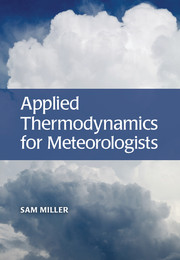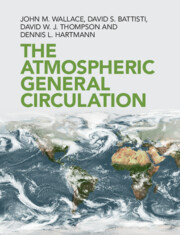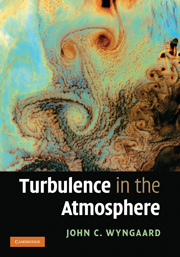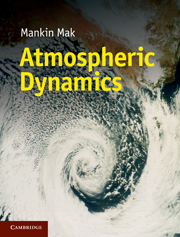Applied Thermodynamics for Meteorologists
This textbook on atmospheric thermodynamics is for students of meteorology or atmospheric science. It also serves as a reference text for working professionals in meteorology and weather forecasting. It is unique because it provides complete, calculus-based derivations of basic physics from first principles, and connects mathematical relationships to real-world, practical weather forecasting applications. Worked examples and practice problems are included throughout.
- Presents practical real-world examples in meteorology
- More mathematically and physically rigorous than competing texts
- Includes many student exercises, with a solutions manual and PowerPoint and JPEG figures available online
Reviews & endorsements
"This text provides a modern and accessible treatment of atmospheric thermodynamics … a student-friendly text, with enough rigor to be a strong thermodynamics text, while sporting a sufficient number of real-world cases to help drive home salient points."
Patrick S. Market, University of Missouri
"A direct and entertaining approach to thermodynamics for meteorologists. The thorough derivations together with smart illustrations, handy reference tables and many practical examples for severe weather, make it an ideal book for students and weather forecasters."
Peter Bechtold, European Weather Centre
'Miller's book is conversational and down-to-earth. He pays more attention to derivations than do most other authors. As he leads the student through the material, he notes assumptions carefully, while successfully avoiding the annoying 'it can be shown' tone of too many textbooks. Miller also provides data tables of key thermodynamic values for various substances, as I found to my delight while working on a research paper; the information is not easy to locate elsewhere … Numerous inclusions of real-life weather data, from surface weather maps to radiosonde soundings, relate the concepts to atmospheric observations.' John Knox, Physics Today
Product details
June 2015Hardback
9781107100718
392 pages
261 × 184 × 24 mm
0.9kg
39 b/w illus. 52 colour illus. 52 tables 142 exercises
Available
Table of Contents
- 1. Basic concepts and terminology
- 2. Equations of state
- 3. Work, heat, and temperature
- 4. The first law of thermodynamics
- 5. Adiabatic processes
- 6. The second law of thermodynamics
- 7. Water vapor and phase transitions
- 8. Moisture considerations: effects on temperature
- 9. Atmospheric statics
- 10. Model and standard atmospheres
- 11. Stability
- 12. Severe weather applications
- Index.






